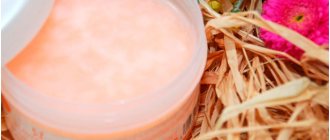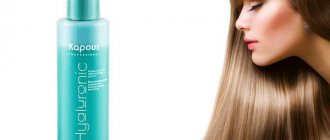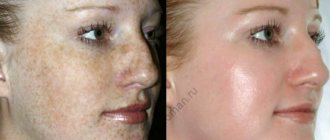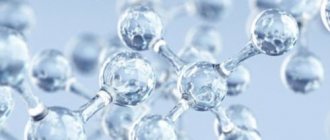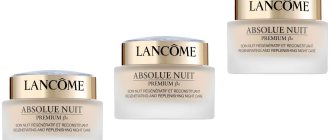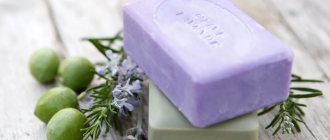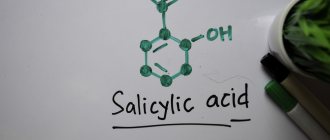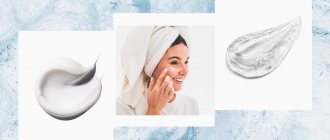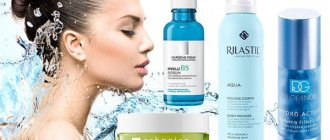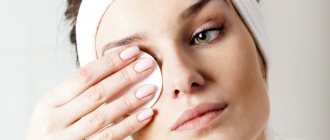Citric acid belongs to the class of carboxylic acids. Moreover, it is found in every kitchen, and in industry it is used as a natural preservative, acidity regulator, and flavor enhancer. In fact, it is a popular antioxidant, that is, a substance that is responsible for the aging of cells not only of the skin, but of the entire body as a whole.
The acid is essentially an antioxidant that removes free radicals and thereby balances the processes of oxidation and reduction in the body. The origin of the acid can be natural or synthetic.
In this article:
General informationBenefits and harmWhere citric acid is usedCitric acid in cosmetics
What it is?
Citric acid in its pure form was first isolated from citrus, from which it received its name.
When dry, it is a white crystalline powder that is easily soluble in water. Belongs to organic acids from the alpha-hydroxy acid family. In professional cosmetics, this substance is often included in peelings because it has strong exfoliating properties. Applied to the skin in a sufficiently high concentration, it is able to break the bonds between living and dead epidermal cells, thereby facilitating and accelerating their exfoliation.
In the production of cosmetics today, various compounds based on citric acid are successfully used. In combination with other components, it acquires clearly targeted properties:
- Essential compounds form a thin film on the surface of the epidermis, which helps retain moisture.
- Aluminum citrate perfectly tightens pores, as it has strong astringent properties.
- Sodium citrate helps regulate the acid-base balance of the skin.
At home, food grade citric acid, purified from foreign impurities, is used. These are its pros and cons, which we will talk about later.
General information
Photo by Victoria Borodinova: Pexels
Tribasic carboxylic acid, which is called citric acid (E330), is small white crystals, highly soluble in water and ethyl alcohol (calorizator), with a sour, non-astringent taste.
Salts of citric acid are citrates; when heated above 175 degrees, the acid decomposes into water and carbon dioxide. Its main purpose is to participate in metabolic processes. It is believed that citric acid was first obtained at the end of the 18th century by the Swede K. Scheele from lemon juice. But information about it is found in manuscripts of the 7th century AD.
The discovery is attributed to an alchemist named Jabir ibn Hayyan. Shag has become a modern source of natural acid, and the synthetic product is obtained through the fermentation of sugar and molds.
Acid or lemon?
What is better: lemon juice or pure citric acid for the face as a cosmetic product? When answering this very common question, we must first focus on the purpose of their use.
Fresh citrus juice contains a huge amount of minerals, trace elements and vitamins, as well as other types of organic acids. In addition, it is much weaker in concentration than pure acid. Accordingly, it works softer. Therefore, it is more suitable for frequent use as part of masks.
Lemon juice is good for making toners, ice cubes, and even rubbing your skin daily for whitening purposes. It is added to masks because it contains a lot of vitamin C, which is not in vain considered the elixir of youth. The essential oils contained in the juice also have a positive effect on the skin.
The main benefit of pure citric acid is its powerful exfoliating abilities. In addition, it can penetrate into the deep layers of the epidermis and affect the production of melanin. This makes it an excellent tool for combating pigmentation and/or anti-aging peels.
On the other hand, if used incorrectly, citric acid can cause severe allergies, redness, irritation of the skin and even burns on it. Therefore, it must be used with great caution, strictly observing the dilution proportions prescribed in the recipes and the exposure time of the finished formulations on the skin.
Sun protection
In general, acids can be used all year round, since solar radiation is almost the same throughout the year. These are UVA rays that cause photoaging - wrinkles, age spots, sagging skin.
Therefore, if you use acids, then please use Sanskrin! Every day, as acids increase skin sensitivity to the sun.
In winter, in principle, a sunscreen with SPF15-20 will be enough.
In summer, it is better not to use aggressive acidic products and use strong protection - spf30 pa++++ or spf50 pa++++.
Before traveling to the sea, stop using acids several weeks in advance.
Here, read more about whether acids can be used in summer.
Effect on the skin
When used correctly, citric acid can have a complex beneficial effect on the skin:
- deeply cleanses and tightens pores;
- evens out skin texture;
- smoothes out small wrinkles;
- slows down the aging process;
- increases blood flow;
- strengthens small vessels;
- stimulates cell renewal;
- reduces the activity of the sebaceous glands;
- brightens and refreshes the face;
- removes acne and small pimples.
Citric acid is an excellent weapon in the fight against pigmentation. It allows you to quickly get rid of freckles and significantly lighten even large dark spots.
Potentially hazardous substances
Citric acid is not used in cosmetics as the main active ingredient. This substance is considered natural and practically harmless, but other additives may be found along with citrates in face creams or hair dyes. Some of them, just like E330, care for the skin, moisturizing, nourishing it, stimulating regeneration processes, but at the same time they pose a health hazard.
Before purchasing skin and hair care products, you should pay attention to their contents.
It is advisable to avoid cosmetics containing compounds such as:
- Bentonite is an emulsifier, a filler with thickener functions, capable of retaining liquid in tissues and absorbing fats. The substance causes allergic reactions and irritation due to disruption of natural air exchange.
- Aluminum - found in hair dyes, penetrates nerve cells through the bloodstream and damages them.
- Paraffin is a substance derived from petroleum products that improves the lubricating properties of creams, is used as a thickener, and is toxic.
- Zinc stearate is a water-repellent and lubricating component that is quickly absorbed into the skin. This component often causes irritation of mucous membranes and skin and accumulates in the body.
- Benzyl benzoate is also considered a toxic and allergenic substance that negatively affects the central nervous system.
- Organic glass (polymethyl methacrylate) is a stabilizer with carcinogenic properties.
- Sodium lauryl sulfate is a potent emulsifier that is used as a grease remover. Refers to toxic components that accumulate in the body. The substance causes dry scalp and makes hair brittle.
Citric acid and many other chemical compounds present in cosmetics are not harmful to health when used correctly in accordance with the manufacturer's instructions. In case of increased individual sensitivity to citric acid, it should not be used in any form.
Methods of application
There are several ways to use citric acid at home as a cosmetic product. You can use it to make a tonic or ice cubes for wiping your face.
Citric acid is often included in homemade masks. But peeling with its crystals has the most intense effect on the epidermis.
For wiping
The easiest way to use citric acid is to dilute it with water. For half a liter of still mineral water or distilled water, take half a teaspoon of dry crystals.
In this proportion, the solution is the basis for other recipes. You can also freeze it and wipe your face with ice cubes.
To enhance the effect, try taking a strained, chilled decoction of medicinal herbs or green tea instead of water. Adding a few drops of your favorite essential oil will make the toner fragrant and extend its shelf life, which is 5-7 days (in the refrigerator!).
When processing your face, you must follow these rules:
- Tonic is used after washing on well cleansed skin.
- Wipe your face with a cotton pad along the massage lines.
- The area around the eyes and lips should be avoided.
- If the tonic gets on the mucous membrane, rinse it off immediately with water.
- The composition is usually not washed off, but if the burning sensation is severe, you will have to rinse your face.
It is highly undesirable to apply decorative cosmetics to your face immediately after lemon tonic. It will help the chemical ingredients penetrate into the deeper layers of the skin, and this is not good for it at all. But a moisturizing or whitening cream will come in very handy.
Masks
Anti-aging or whitening masks are usually made based on citric acid. Since the substance is quite irritating to the skin and is a powerful exfoliant, they can be done no more than 1-2 times a week on oily skin and 2-3 times a month on dry skin.
Here are some noteworthy recipes:
- For acne and rashes. A tomato mask with citric acid helps a lot. Peel a ripe medium-sized tomato and puree it in a blender. Add a pinch of citric acid, a teaspoon of finely chopped fresh mint and thicken the composition with cosmetic clay. Apply in an even layer. Keep for no more than 15 minutes. Remove the residue with a napkin and rinse with cool water without soap.
- Anti-pigmentation. The mask perfectly cleanses pores and is perfect for oily and combination skin. Do not use on ulcers and open wounds! Separate the egg white from the yolk and beat with a pinch of citric acid until foamy. Add a teaspoon of hydrogen peroxide to it. Apply layer by layer onto face using a cotton pad. Keep for no more than 10-15 minutes. If the burning sensation is severe, rinse off earlier. Be sure to apply a moisturizing or soothing cream afterwards.
- Refreshing with mayonnaise. In any case, a mask with citric acid has a whitening effect. But in this one it softens so much that the product is suitable for dry and aging skin that you want to refresh and nourish. Dilute a pinch of citric acid in 20 ml of clean water and mix with a tablespoon of mayonnaise (preferably homemade). Apply in an even layer. Leave for up to 20 minutes and rinse with lukewarm water and a small amount of gel.
- Nutritious. The composition is universal and suitable for almost any skin type, except very sensitive. Provides cells with useful substances and building materials. Beat the egg yolk until white foam with a teaspoon of high-quality honey. Add a pinch of citric acid and, if desired, 3-5 drops of your favorite essential oil. Spread the mixture evenly over the skin. You can hold it for up to 20-30 minutes. Rinse off with lukewarm water without gel.
- Moisturizing. Lactic acid has excellent moisturizing properties. In addition, it promotes skin whitening and rejuvenation. Mix two tablespoons of kefir with a teaspoon of glycerin and a pinch of citric acid. Apply the mixture in layers with a brush or cotton swab. Leave for 15 minutes and rinse with running water without soap.
In principle, a small amount of citric acid can be added to almost any homemade mask. It will give them toning, brightening and rejuvenating properties. This substance is organic and is useful for almost everyone with healthy skin.
Lemon peeling
Before doing peeling with citric acid at home, make sure that you have no contraindications to it, there is no individual intolerance, and the skin is not damaged. The procedure is performed no more than 2-3 times a month. For two weeks after it, you must especially carefully protect your face from exposure to ultraviolet radiation.
Step by step peeling with citric acid looks like this:
- We perform a thorough make-up removal and wash.
- Do not steam your face under any circumstances.
- Place a small amount of citric acid crystals on your fingertips.
- Using gentle movements, massage wet skin.
- Avoid the areas around the eyes and lips, as well as moles.
- After 3-5 minutes, wash the skin with cool running water.
- Apply natural oil to your face: olive, peach, wheat germ, grape seed.
- Let stand for 10-15 minutes.
- We wash ourselves again - this time with warm water with a small amount of gel.
- Be sure to apply a moisturizing or soothing cream.
In some cases, after such a procedure, very severe redness of the face may occur. It can last for more than 2 hours. Then it is better to help the skin recover with a spray with panthenol.
You will have to wash your face well again and cover your clean, dry skin with a generous layer of foam. It is left for 15-20 minutes, and then the residue is removed with a dry paper napkin. After such a mask, the redness usually disappears quickly.
Benefits and harms
Control of cell aging primarily concerns the skin, whose aging is the first to be noticed by a person. Citric acid balances oxidation-reduction, activates the synthesis of its own collagen and elastin, hyaluronic acid, increasing the elasticity of the dermis, preserving the contours of the face and body. In addition, E 330 removes toxins and waste products along with free radicals through the pores of the skin, and demonstrates a bactericidal effect.
Why isn't citric acid made from lemons?
The beneficial properties of citric acid are divided into two large groups: benefits in food and cosmetology. The presence of E330 in food contributes to:
- cleansing the body;
- antioxidant regeneration;
- increasing immunity;
- improving metabolism.
In cosmetology:
- cleansing the dermis;
- narrowing of pores;
- exfoliation of horn cells;
- whitening age spots;
- activation of the synthesis of the skin’s own collagen;
- even out complexion.
Photo by Nataliya Vaitkevich: Pexels
But there is another side to the coin: in large quantities, citric acid provokes burns of the skin and mucous membranes, which is especially dangerous for the upper respiratory tract and eyes. Therefore, any use of citric acid requires extreme caution and accuracy.
It is better to work with the substance in glasses and a respirator. Citric acid is actively used for weight loss, where its overdose causes significant harm to the digestive system.
In addition, citric acid, especially synthesized acid, is very allergenic and dangerous for children, pregnant and lactating women. The fact that E 330 provokes cancer has no scientific basis, these are just rumors. But acid destroys tooth enamel, like all its relatives. One way or another, citric acid is not prohibited for use in any country in the world.
Contraindications
Citric acid in cosmetology (meaning homemade) is not used for:
- the presence of open wounds and extensive skin damage;
- its individual intolerance;
- exacerbation of chronic diseases;
- active form of the herpes virus;
- skin diseases: psoriasis, eczema, dermatitis;
- the presence of any neoplasms;
- pregnancy and lactation.
You should not make masks and peels with a high concentration of citric acid on freshly tanned skin. They are also not recommended during the course and 3-4 weeks after aggressive anti-aging procedures: microdermabrasion, mesotherapy, chemical or laser peels.
Read also
Salicylic acid for problem skin
Using my referral code REQ532 on iherb.com you not only get a $5 discount on your first order or 5% on all subsequent ones, but also support the site and the writing of new articles. Thank you ❤
Here we look at how to register on iHerb and place an order.
AcidsSite: iherbSite: lookfantastic.com
Indications for the procedure
Like any other fruit peeling, lemon peeling is a superficial skin exfoliation procedure, so it does not affect the deeper layers of the dermis. Taking this into account, the process of caring and renewing the dermis using the E330 dietary supplement is not intended to solve complex skin problems, such as deep wrinkles, severe sagging, extensive age-related pigment changes, etc.
What problems can lemon peeling solve:
- Polluted pores;
- Freckles, mild pigmentation;
- Dull complexion;
- Enlarged pores;
- Excessive oily skin;
- Weak turgor of the cover;
- Fine network of wrinkles;
- Granularity of the skin.
Order of ingredients
According to the rules of modern trade, the product packaging must contain a complete list of ingredients in Russian or written in Latin script (that is, INCI).
The ingredients are arranged in order of decreasing content, in other words, the component that is most abundant in the product is listed first.
Most often this is ordinary water, then oils can come (usually in lotions and creams), detergents - surfactants (present in shower gels and shampoos), other components that determine the cosmetic properties of a particular product, which may include emulsifiers, gelling agents, etc. At the end of the list are preservatives, to which dyes, fragrances and flavors can also be added.
Although the modern cosmetics industry produces thousands of names of all kinds of care products, according to the indicated scheme, any buyer can quite easily navigate in order to choose a product that is suitable for him in terms of safety and naturalness.
For those for whom it is important to become the owner of natural cosmetics, you need to remember the following. There is a table that lists those components that negatively affect the degree of environmental friendliness and naturalness of cosmetic products. Typically, certified organic and natural cosmetics do without such ingredients, although they are often found in green washing products.
Peeling recipes: the best options
There are many recipes and descriptions of how to properly peel your face with lemon yourself.
Therefore, we can confidently say that every woman will choose the best option for herself, depending on the problem and the availability of ingredients.
You can peel your face with lemon only with freshly squeezed juice and zest, but these ingredients cannot be replaced with citric acid, as this can cause irreparable harm to the skin.
Options for combination to very oily skin
Recipe 1:
- Heat 1 tablespoon of honey in the microwave until warm, add 200 grams of unsweetened natural yogurt (preferably low-fat) and juice from half a fresh lemon.
- Beat the cooled egg white until foamy and add it to the finished mixture.
- After this, mix everything thoroughly and gently until smooth.
Recipe 2:
- Mix 2 tablespoons of pure coffee cake with freshly squeezed juice of half a lemon, adding a little cleanser.
- Mix the mixture thoroughly until smooth.
Universal peeling options for all skin types
Recipe 1:
- Pour a bag of dry gelatin with a freshly squeezed mixture of orange and lemon juices, taken in equal parts.
- Wait until the gelatin dissolves, then heat it in a water bath and apply it to the skin while still warm.
- Wait until the mixture hardens, gently roll and wash.
Recipe 2:
- Pour 1 teaspoon of sugar with freshly squeezed lemon juice and stir until it is completely dissolved.
- Then apply to the skin and leave for the prescribed time, rinse.
Recipe 3:
- Grate the zest from 2 fresh lemons and add 1 tablespoon of olive or other oil.
- Apply to the skin and wait until the product takes effect, then rinse thoroughly.
Recipe 4:
- Grind a tablespoon of wheat bran in a coffee grinder to a powder, add freshly squeezed juice of half a lemon.
- Heat the honey a little in a water bath and also pour it into the bran.
- Gently mix everything until smooth and apply it to your face while still warm.
Recipe 5:
- Grind 1 small cucumber on a fine grater or in a blender until pureed (if the cucumber has a thick skin, it is better to cut it off).
- Squeeze the juice from half a lemon and 1 egg into the cucumber, mix until homogenized and apply to a steamed face.
